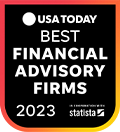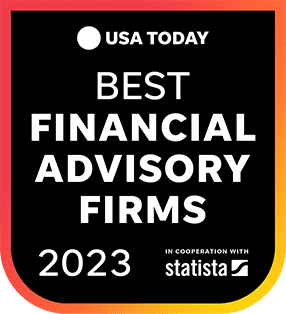There is a notion, in investing as well as baseball, of “hitting it out of the park”. Though we may be sheepish about saying it, we all want it, and have quiet visions of achieving it. For the record, stating it clearly as your always objective financial person, I want you to know that it is “possible”. Dreams are built on such possibilities. The real question for investors, however, is whether it is “probable”. Is it a risk I should take? The answer there…is no. This letter explores why that result is the case on three different levels, and yet concludes with the wisest solution possible – so you can have your cake and eat it too[i].
Before launching into the reasons why the dreams of hitting it out of the park turn into nightmares, it would be instructive to understand that all investing is focused on having more tomorrow than we have today. That unrelenting pursuit is not greed, it’s rationality. We would not save money if we thought it were going to turn into less money than we have today. Frankly, THAT decision would be irrational. Having thus settled the foundational question, the only remaining question is: “How much risk are we willing to take to get that additional money?” Voila. Now you have a basis for the seminal investment formula that supersedes all others: Risk = Return.
Also, due to the above foundational formula, we know that stocks possess more risk than quality bonds. The long-term return on stocks is 10%[ii]. If you purchased a stock for $100, it would be rational for you to think it would go up to $110 a year from now. Now, because hope springs eternal, let’s say you just know that stock is going to go to $200 next year. If you did, you would rationally pay up to $182 for that security now because that 10% return (or MORE) is what you are after. But…if no one else knew what you knew…and you had a 100% 1-year return on that stock (($200-$100) / $100), you would be knocking it out of the park.
Notwithstanding the glorious result just mentioned, what follows are the three both logical and experiential case arguments for why knocking it out of the park is a misplaced bet (bad probabilities).
- To achieve that singular stock bonanza in your hand, it makes sense that in your head you had information that no one else did. Why? Because if other people had that knowledge, then the security would have been ‘bid up’ by people buying it on the free-will marketplaces we call stock exchanges. Why would I keep my lousy going-to-earn 10% stock when I could buy a 100%-return stock? The answer is we wouldn’t. If we find someone holding onto a stock that we know is going to go up a lot, we don’t say: “Ahhh…I’d like to buy that stock, but I feel bad for you missing out on the 100% return that’s coming.” We may love our fellow neighbor…but we don’t love them that much. We also generally don’t possess unique company information because all company information must be shared publicly at the same time[iii]. In technical finance terms, if you buy an individual stock, you are taking on what is known as ‘idiosyncratic risk’:
“Idiosyncratic risk is the risk that is particular to a specific investment – as opposed to risk that affects the entire market or an entire investment portfolio.”[iv]
In summary, idiosyncratic risk is an investment risk that you don’t get compensated to take, which violates the fundamental R = R.
- The above misplaced investor confidence is often attributed to single security (be it stock or bond), but as human beings we also do it for certain sectors of the market or groups of stocks. Think roaring Artificial Intelligence (AI) companies of this past year (Magnificent 7) or that the U.S.A. is the most business-friendly marketplace in the world so smart investors should invest here. Some data points:
- Finally, we do have to keep in mind an essential tenet of risk, and that is our ‘capacity’ to take risk. ‘Willingness’ to take risk is one animal, capacity is another. An investment can go up…and it can go to zero. A couple of interesting tidbits in this realm:
- It is seldom known even by capable advisors, but between 1985 and 2024, the average stock suffered a maximum interim decline of 81%, and more than half never recovered their previous highs.[viii]
- It is straight math that if you decline 50% on an investment, you need to have a 100% return just to get back to even.
- If you swing for the fences, you strike out a lot. Babe Ruth at one time led that list (1,330 strikeouts), but he’s been far surpassed by hallmark names such as current leader Reggie Jackson (2,597), Jim Thome, Sammy Sosa, “Big Donkey” Adam Dunn, “A-Rod” Alex Rodriguez, and Miguel “Miggy” Cabrera (all with more than 2,000)[ix]. But…never forget that in every baseball game those big hitters start at zero strikeouts for that game. Investors, unfortunately, carry their history with them.
Now, what’s the tasty investment anecdote I promised you? Diversification. As Nobel Prize winner Harry Markowitz said:
“Diversification is the only free lunch in investing”
If you diversify away your idiosyncratic risk, you are left with your ‘compensated risk’, which is normal market volatility. As an investor, you will still go up and down…but history demonstrates you’ll never stay down. VT is a nice broad-based Vanguard ETF that has 9,844 stocks in it[x]. That sounds pretty good, but if you are an investor with Wellspring, you own 14,741 or more[xi] companies, a phenomenal 50% greater diversification. Further, whereas most money managers fall short of their respective index (3-year to 20-year measurements), your investment funds exceed their index 80%-92% of the time, which is frankly phenomenal[xii]. The odds are most definitely in your favor.
If you have a friend you’d like to help, please consider mentioning Wellspring to them for a conversation. We don’t play baseball, but we know a great deal about financial home runs. Helping families obtain a better life – the only game that really counts – is our core mission. In my years of experience, what’s most needed for investors to succeed is simply a combination of education and honesty, and because of that commitment “we call ‘em as we see ‘em”.
It remains my deep and distinct honor to serve you well.
Patrick Zumbusch
Founder and CEO
[i] “You can’t have your cake and eat it” Original From A 1538 Letter (Wikipedia, July 27, 2025)
[ii] 10.463% Actually; “Historical Average Stock Market Returns for S&P 500 (5-year to 150-year averages)” (Trade That Swing, June 12, 2025)
[iii] Regulation Fair Disclosure (U.S. Securities and Exchange Commission, July 29, 1998))
[iv] “Idiosyncratic Risk” (Corporate Finance Institute, July 26, 2025)
[v] “Best-performing stocks: July 2025” (Jame Royal and Brian Baker, Bankrate.com, July 1, 2025)
[vi] Roundhill Magnificent Seven ETF (MAGS) versus Standard and Poor’s 500 ETF (SPY) (Yahoo.com, July 25, 2025)
[vii] Morgan Stanley Capital Index (MSCI) EAFE and Emerging Markets Indices versus S&P500 (Adyzon, July 25,2025)
[viii] “Index-Fund Investing Is Now An Extreme Sport” (Michael Maubossin and Dan Callahan (Morgan Stanley), Jason Zweig, Wall Street Journal, July 12-13, 2025)
[ix] “List of Major League Baseball Career Strikeouts By Batters Leaders” (Wikipedia, July 27, 2025)
[x] Vanguard Total World Stock ETF (StockAnalysis.com, July 26, 2025)
[xi] Equity Characteristics (Investments, Dimensional Fund Advisors, June 30, 2025)
[xii] Dimensional vs. The Industry (March 31, 2025)




